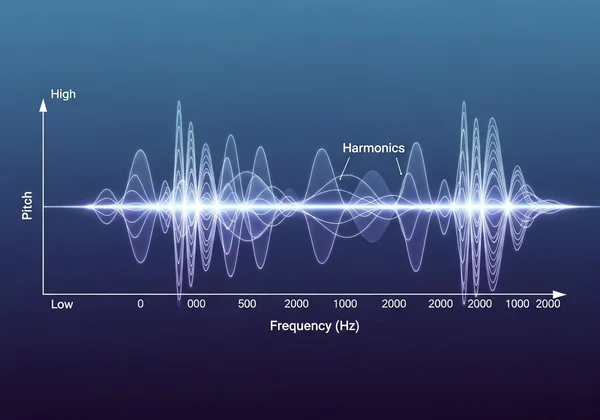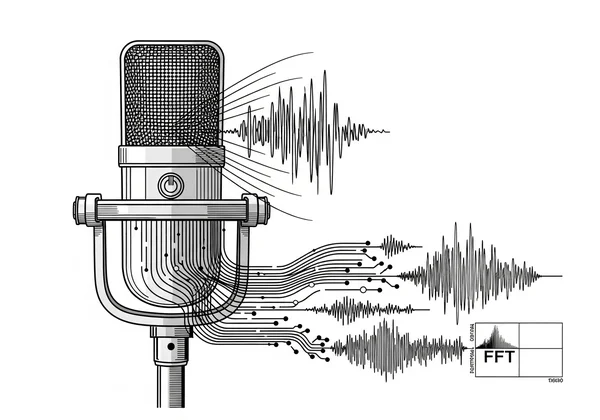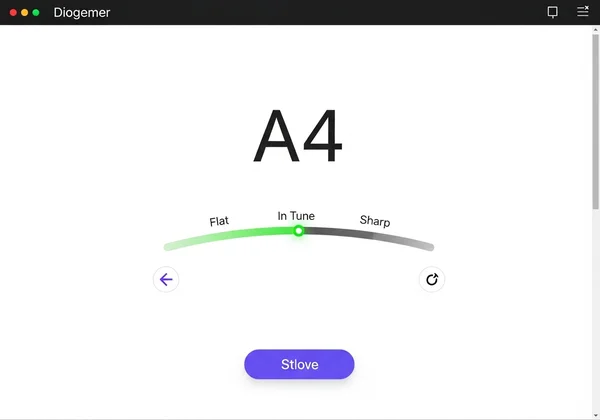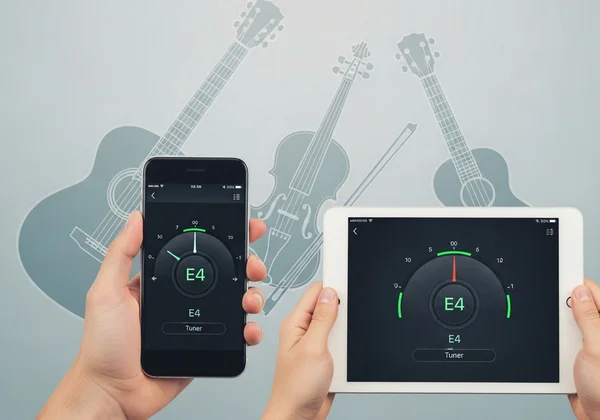How Online Tuners Work: Pitch, Frequency & Sound Physics
Ever hit a sour note and wondered how your screen instantly tells you if you're sharp or flat? Tuning isn't just about getting the note right; it's a brilliant blend of sound physics and clever tech. Millions of musicians rely on an online tuner every day, but have you ever stopped to think: How does it really work? Join us as we explore the fascinating science behind how our online tuner helps you achieve perfect pitch, every time. By understanding the journey from a vibrating string to a clear 'in tune' signal, you'll not only satisfy your curiosity but also gain a deeper appreciation for the precision tools at your fingertips.
Understanding Sound Physics: The Core of Musical Tones
Before a digital tool can interpret a note, it has to understand the language of sound itself. This language is governed by the principles of physics. At its heart, every musical note is a sound wave, a vibration traveling through the air. An online instrument tuner works by capturing and analyzing the distinct properties of these waves.
What is Pitch? Decoding Highs and Lows
The most fundamental quality of a musical note is its pitch. Simply put, pitch is our perception of how high or low a sound is. A deep bass note has a low pitch, while a high C on a violin has a high pitch. In physics, this is determined by how quickly the sound wave is vibrating.
Think of it like this: slow, lazy waves create low pitches, while fast, frantic waves create high pitches. When you play a note, your instrument creates a sound wave with a specific, measurable pitch. The first job of any tuner, including our online guitar tuner, is to accurately identify this core characteristic from the sound it receives.
Frequency Explained: Hertz (Hz) and Standard A440
To measure pitch objectively, we use frequency. Frequency is the scientific term for the rate of vibration, and it's measured in Hertz (Hz). One Hertz equals one vibration or cycle per second. So, a note with a frequency of 100 Hz means its sound wave is vibrating 100 times every second.
To ensure musicians worldwide can play together in harmony, a standard reference pitch was established. This is known as A440 or "Concert A," which sets the A note above middle C to a frequency of exactly 440 Hz. Every other standard musical note is tuned relative to this benchmark. An online tuner's database contains the precise Hz value for every note, allowing it to compare your instrument's sound to the universal standard with incredible accuracy.
The Magic of Harmonics: Shaping Your Instrument's Sound
Here's where things get truly interesting. When you play a single note on a guitar, you're not just producing one frequency. You're actually creating a complex sound wave composed of a primary frequency (the fundamental pitch) and a series of quieter, higher-frequency waves called harmonics or overtones.
These harmonics are what give an instrument its unique character or timbre. It's why an A4 played on a piano sounds different from the same A4 played on a trumpet, even though they share the same fundamental frequency of 440 Hz. Sophisticated tuners must be able to isolate the fundamental pitch from these rich harmonics to avoid confusion and provide a stable reading.

How Online Tuners Work: From Vibration to Visual Feedback
Now that we understand the building blocks of sound, let's trace the journey of a note from your instrument into the digital brain of an online tuner. This process happens in a fraction of a second, blending hardware and intelligent software to deliver instant results. The goal is to convert the analog reality of a sound wave into digital information you can act upon.
The Microphone: Your Online Tuner's Ears
The journey begins with your device's microphone. A microphone is a transducer, a device that converts one form of energy into another. In this case, it captures the physical vibrations of sound waves traveling through the air and transforms them into an electrical audio signal.
This electrical signal is an analog representation of the sound, mirroring the shape and frequency of the original wave. For any microphone tuner to work, it needs a clear, clean signal from the microphone. This is why it's important to be in a relatively quiet environment and place your device close to your instrument for the best results.
Audio Processing: Analyzing Sound Waves with Algorithms
Once the sound is converted into an electrical signal, it enters the digital realm for audio processing. The signal is digitized, and this is where powerful software algorithms take over. The most common technique used is called the Fast Fourier Transform (FFT).
The FFT algorithm is a mathematical marvel that deconstructs a complex sound wave—complete with its fundamental pitch and all its harmonics—into its individual frequency components. It essentially creates a "spectrum" of the sound, showing the intensity of each frequency present. The algorithm then intelligently identifies the strongest, or fundamental, frequency, which corresponds to the note you played. This complex analysis is what allows a chromatic tuner to identify any note you play.

Real-time Display: Sharp, Flat, or Perfectly In Tune
The final step is translating this data into simple, actionable feedback. The tuner's software compares the detected fundamental frequency to the nearest standard musical note in its database. For example, if it detects a frequency of 442 Hz, it knows you're trying to play an A4, which should be 440 Hz.
It then calculates the difference and presents it on a real-time display. This visual interface, often a moving needle or changing colors, instantly tells you if your note is "sharp" (too high), "flat" (too low), or perfectly in tune. This immediate feedback loop allows you to make precise adjustments to your instrument until the visual cue confirms you've hit the exact target frequency. See the feedback live and watch the science in action.

Your Trusted & Accurate Online Tuner
Understanding the technology behind an online tuner is one thing, but having a reliable and precise tool is what matters most to musicians. Our tool was built on these scientific principles to provide a professional-grade tuning experience that is both powerful and incredibly easy to use. It’s designed to be the go-to tool for beginners, educators, and gigging musicians alike.
Precision Engineering for Every Instrument
Our online tuner uses highly refined algorithms designed for maximum accuracy. Our tool functions as a chromatic tuner, meaning it can detect all 12 pitches of the Western musical scale. This versatility makes it perfect for a wide range of instruments beyond the standard guitar, including bass, ukulele, violin, and even wind instruments.
The tool’s high-precision engine ensures that you are tuning to the exact standard, which is critical for everything from solo practice to ensemble performance. Whether you are a beginner learning standard tuning or an advanced player exploring alternate tunings, our tuner provides the reliability you need. You can tune any instrument with confidence.
Why Our Tool is Your Free Online Tuner of Choice
Beyond its technical precision, this online tuner is built on a foundation of user-friendliness and accessibility. We believe that every musician deserves access to a quality tuner without any barriers. That’s why our tool is completely free, with no ads to distract you and no registration required.
There are no downloads or installations needed; it runs directly in your browser on any device with a microphone, including your phone, tablet, or laptop. This unmatched convenience means you have a reliable tuner in your pocket wherever you go. For music educators, it's the perfect resource to recommend to students, ensuring everyone is working with the same accurate, easy-to-use tool. Ready to start? Use this free tuner right now.

Tune with Confidence: The Science-Backed Advantage
From a simple pluck to a perfectly tuned note, it's clear that science and technology are making musicians' lives easier. Grasping the basics of sound—pitch, frequency, and harmonics—helps you appreciate the intricate audio analysis our online tuners perform. This understanding empowers you to tune with unmatched precision. So, now that you've peeked behind the curtain, you can truly trust the tech that makes accurate tuning so accessible. Our online tuner puts these powerful principles to work for you, delivering a fast, accurate, and incredibly user-friendly experience. Go on, tune with confidence, and let your passion for music shine through in every perfectly pitched note. Get in tune now and truly hear the difference.
Frequently Asked Questions About Online Tuners & Sound
Is an online tuner accurate enough for professional use?
Yes, modern online tuners can be exceptionally accurate. They use sophisticated algorithms that rival the precision of many dedicated hardware tuners. For practice, songwriting, recording demos, and even pre-show tune-ups, a high-quality online tool is more than reliable for professional musicians.
How does a chromatic tuner detect different instrument pitches?
A chromatic tuner is not limited to a specific instrument's standard notes (like a simple guitar tuner might be). Instead, it analyzes the frequency of any sound it hears and matches it to the nearest of the 12 chromatic notes in Western music. This universal approach is what allows it to tune a violin, bass, cello, or even your voice with equal effectiveness. You can try our chromatic tuner to see its versatility.
Can I tune my instrument on my phone or tablet?
Absolutely. This online tuner is a browser-based tool, which means it works on any device that has a web browser and a microphone. There's no need to download an app. Simply open the website on your phone, tablet, or laptop, grant microphone access, and you're ready to tune anywhere, anytime.
Why are harmonics important for instrument tuning?
While the tuner focuses on the fundamental frequency to determine the pitch, harmonics are crucial for an instrument's overall intonation. Advanced tuning techniques, such as setting a guitar's intonation, involve comparing the pitch of a fretted note to its harmonic at the 12th fret. If they don't match, the instrument will sound out of tune as you play higher up the neck, even if the open strings are perfectly tuned.